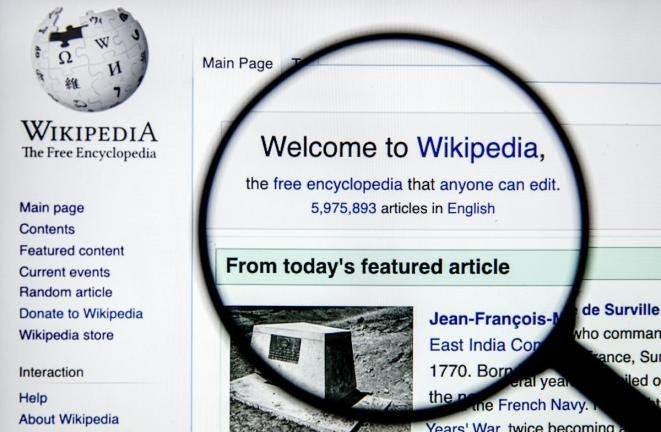Sci-Ed Update 243
Can microbiome dysfunction be transmissible? Lots more on the ChatGPT phenomenon (including our own new podcast episode) and more stories!
The microbial communities living in and on our bodies evolve through our lives and are shaped by our social interactions, a study has found.Credit: Moyo Studio/E+/Getty
How our microbiome is shaped by family, friends and even neighbours
Social contacts throughout a person’s lifetime seed the body with microbes that could influence health and disease.
People living in the same household share more than just a roof (and pints of milk). Be they family or flatmate, housemates tend to have the same microbes colonizing their bodies, and the longer the cohabitation, the more similar these microbiomes become.
The conclusion — based on an 18 January study in Nature of the gut and mouth microbiomes of thousands of people from around the world1 — raises the possibility that diseases linked to microbiome dysfunction, including cancer, diabetes and obesity, could be partly transmissible.
“This study is the most comprehensive look to date at when and why microbes transmit into the gut and oral microbiomes,” says Katherine Xue, a microbiome researcher at Stanford University in California. “New microbes can continue to reshape our microbiomes throughout our lives.”
Read more→ AandP.info/dtj
The University of Florida campus in Gainesville. Colleges and universities have been reluctant to ban the new chatbot because administrators doubt the move would be effective. Credit...Todd Anderson for The New York Times
Alarmed by A.I. Chatbots, Universities Start Revamping How They Teach
With the rise of the popular new chatbot ChatGPT, colleges are restructuring some courses and taking preventive measures.
Across the country, university professors … department chairs and administrators are starting to overhaul classrooms in response to ChatGPT, prompting a potentially huge shift in teaching and learning. Some professors are redesigning their courses entirely, making changes that include more oral exams, group work and handwritten assessments in lieu of typed ones.
Read more→ AandP.info/ql0


Seen on Twitter
KP: Hey, if you have a course policy about ChatGPT or other AI tools, and want to share it here, use the Comments tool at the bottom of this (or any) issue online.
Is AI the Beginning or End of Learning?
In Episode 131, Kevin Patton discusses the use of ChatGPT and other chatbots and artificial intelligence (AI) in teaching and learning. We learn what's going on, what to be concerned about, and what to look forward to. And how to keep breathing.
To listen, click the player (if visible) or go to theAPprofessor.org/podcast-episode-131.html
Surgeons performing an operation VILevi/Getty Images/iStockphoto
Woman has entire scalp reattached after it was ripped off by a drill
Surgeons reattached a woman’s scalp by meticulously stitching the skin and blood vessels back together after her hair was caught in a column drill and torn off
A woman in Denmark has undergone complex surgery to reattach her scalp after it was completely torn off by a column drill, along with her eyebrows and all her hair.
The woman in her mid-60s was using a column drill – a benchtop tool used to create holes in metal panels and other materials – to renovate a tractor, when her hair became tangled in the rapidly rotating drill bit.
This resulted in her entire scalp being yanked off, leaving a thin layer of bleeding connective tissue covering her skull, and her upper left ear dangling by a thread.
The woman called an ambulance and the attending paramedics packed her scalp in a plastic bag inside a bag of cold water and ice and rushed her to Odense University Hospital in southern Denmark.
Plastic surgeons removed the scalp from the ice and cut the hair short. They placed the scalp back on the woman’s head while she was anaesthetised and reconnected three of the severed blood vessels to return blood flow to her scalp. Next, they stitched her skin back together and sewed her upper ear back on, all within 5 hours of the accident.
Read more→ AandP.info/5hd
Observational studies suggest that challenging our brain, for example via puzzles, may ward off dementia, but this has not been proven Getty Images/izusek
Lifestyle may affect your dementia risk but the extent is exaggerated
There are many things we can do to try to reduce our risk of dementia, but the condition is not usually preventable
This week, the charity Alzheimer’s Research UK launched a campaign telling people they can cut their risk of dementia by making certain lifestyle changes, but the impact of such measures is uncertain and probably overstated.
The charity’s advice is based partly on a 2020 report from a respected medical journal, The Lancet, that summarised what we know about risk factors for dementia. The new campaign, called the Think Brain Health Check-in, includes some standard lifestyle advice like eating healthily, avoiding smoking and exercising regularly, as well as supposedly dementia-specific steps, such as wearing hearing aids if necessary and doing puzzles.
The campaign acknowledges that risk factors such as our age and genetics can’t be changed, but says we can alter our diet and how we challenge our brain.
The online tool has been changed since it went live on 18 January. The initial version, which was used so heavily that the website had difficulty meeting demand, didn’t mention that some of our propensity to dementia is down to lifestyle – “up to 40 per cent”, according to the 2020 estimate. The rest of our risk comes down to which versions we have of many genes, which are obviously immutable. After this criticism was put to Alzheimer’s Research UK, they changed the website to include the 40 per cent figure.
KP: Good. I’m tired of doing crossword puzzles.
Read more→ AandP.info/zog
(Anadolu Agency/Getty Images)
Wikipedia, Once Shunned, Now Embraced in the Classroom
Professors who incorporate Wikipedia-editing assignments into coursework enhance their students’ digital literacy skills while broadening their own roles—from educating college students to educating society.
About a decade ago, Amin Azzam, professor of psychiatry at the University of California, San Francisco, often told his medical students not to research health information on Wikipedia out of concern for the website’s reliability. But a student once looked at him “like he was crazy,” which made him rethink that stance.
“Look, we all go there first as students,” the student told Azzam. “Why are you fighting us? Why don’t you help us make it better?”
Azzam considered the wisdom in the student’s comment: the free encyclopedia’s entries are written in a way that students understand. They also offer an accessible first pass on new topics or a review of forgotten topics. Besides, he decided, many patients rely on Wikipedia to research medical concerns, and doctors who ignore that reality are fooling themselves. He decided to design and teach an elective course at the medical school on Wikipedia editing.
Azzam is part of a growing trend of professors who incorporate Wikipedia-editing assignments into their classes. In the process, these instructors are rendering old arguments against the crowdsourced website moot, enhancing their students’ digital literacy skills and broadening their educator roles from the classroom to society. But curricular efforts to increase students’ facility with Wikipedia aside, some still discourage students from citing it as a source in research.
Read more→ AandP.info/tsr
Bipedalism and Other Tales of Evolutionary Oddities
From the nucleus of each cell to the architecture of our organs, the human body bears the traces and wounds of a long and contrasting evolutionary history.
The transition to bipedalism generated negative consequences in almost every part of the body. Human feet, with their plantigrade locomotion, have to tolerate high stress levels. Our neck, with that heavy, swinging bowling ball balanced on top, becomes a weak point. The abdomen, with all of its internal organs, is exposed to all sorts of trauma. The peritoneum is being pushed down by the force of gravity, provoking a predisposition to hernias and prolapses. You might even feel the consequences on your face. The next time you have a cold and feel the mucus pressing into every orifice of your face, think about the fact that your constipated maxillary sinuses have their drainage channels pointing upward toward the nasal cavities — against gravity! This makes them completely inefficient and easily clogged up with mucus as well as with other slimy substances. This seems like a bad design, but the fact is that in a quadruped, the opening of the maxillary sinuses faces forward, which works well. Yet for former quadrupeds like us, our faces have only recently adopted a vertical position, and this is the result.
Archaeologist André Leroi-Gourhan was right in saying that the history of humanity began with good feet, before great brains. But it was an ordeal, particularly in the beginning. Then we grew to like it, and with those legs we became migrant primates, with a strong sense of curiosity and no more boundaries to hold us back.
Read more→ AandP.info/iqy
There’s a lot more of the bacterial species Streptococcus salivarius (shown) in the noses of people with hay fever than the noses of those without, researchers have found. The overabundance may be exacerbating allergy symptoms. DR KARI LOUNATMAA/SCIENCE SOURCE
Too much of this bacteria in the nose may worsen allergy symptoms
Streptococcus salivarius has a knack for latching onto mucus-coated cells, causing inflammation
Hay fever occurs when allergens, such as pollen or mold, trigger an inflammatory reaction in the nasal passages, leading to itchiness, sneezing and overflowing mucus. Researchers analyzed the composition of the microbial population in the noses of 55 people who have hay fever and those of 105 people who don’t. There was less diversity in the nasal microbiome of people who have hay fever and a whole lot more of a bacterial species called Streptococcus salivarius, the team reports online January 12 in Nature Microbiology.
Read more→ AandP.info/txb









